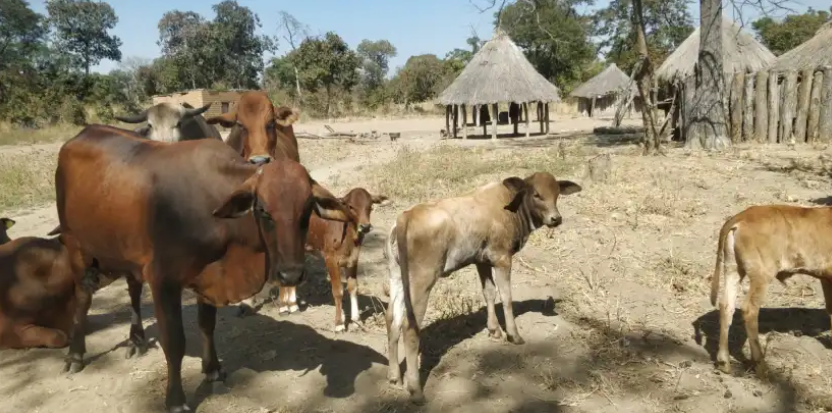This impact story was originally posted to CIFOR Forest News here.
Greater engagement with the private sector to enhance rural development in southern Zambia could be encouraged by empowering small- and medium-sized enterprises (SMEs), and by involving the private sector through targeted measures when planning sustainable landscape activities, according to new findings on a topic seldom studied.
To understand the role and influence of various private-sector actors, researchers analysed value chains in Kalomo District regarding the production of four locally important commodities – maize, tobacco, cattle, and charcoal – and how these impact land use, local livelihoods, and environmental objectives. Smallholders and SMEs were a particular focus, as they play significant roles in producing these commodities, mainly targeted at domestic or regional consumption.
The issue is timely, as it involves the livelihoods and well-being of smallholders in addition to sustainable resource management in Kalomo. Such issues are also common in many other rural landscapes characterized by high levels of poverty, low agricultural productivity, and widespread deforestation and forest degradation.
There is significant interest and evidence available on strengthening private-sector engagement in agricultural landscapes, but that interest has mainly focused on larger companies and globally traded commodities. “Therefore, to unlock the full potential of the private sector in this type of context, the role of the small-business actors needs to be recognized and considered when planning for landscape activities,” said James Reed, a co-author of the recently published study, ‘Assessing the Potential for Private Sector Engagement in Integrated Landscape Approaches: Insights from Value-Chain Analyses in Southern Zambia’ and a scientist at the Center for International Forestry Research and World Agroforestry (CIFOR-ICRAF). Although the study focused specifically on rural Zambia, the methodology and recommendations could be used to complement integrated landscape approaches (ILAs)’ application efforts elsewhere, the researchers noted.
The private sector could play a critical role regarding land use, livelihoods, and ecosystems in production landscapes, said Reed. Yet this sector has usually had limited participation in ILAs and other resource-management strategies that involve multiple stakeholders. In fact, effective engagement of companies as landscape partners in many parts of the world has so far been insignificant; and in Africa, private agribusiness partners participated in only eight percent of ongoing integrated landscape initiatives, according to previous research cited by the paper.
This potentially represents significant missed opportunities – stronger private-sector involvement could help to address funding gaps, create co-funding opportunities, and encourage public-private collaborations. Furthermore, increased engagement of the private sector could also help to green supply chains, avoid land-use conflicts, and protect human rights. However, there may also be risks that should be explored.
In addition to empowering SMEs, other entry points identified by the paper – where greater private-sector engagement could be encouraged – include work to address water access and scarcity, which are major constraints in smallholder farming. A heavy reliance on rainfall makes agricultural value chains very vulnerable to climatic shocks, particularly droughts. Therefore, improving water management, coupled with other farm support, could provide an opportunity for an ILA to partner with agribusiness companies to design activities that also create co-benefits for the overall sustainable development of the landscape, such as increased resilience against climate change. “In our study, improved water management offers potential to reduce farming risk and diversify production, which, together with strengthening the small producers’ position in the value chains, could help them take a more prominent role in landscape decision-making,” said co-author and CIFOR-ICRAF scientist Kaala B. Moombe. “A jointly crafted management plan could then bring all the different elements together to agree on the concrete, sustainable landscape activities, including roles and responsibilities.”
This study was conducted as part of the broader Collaborating to Operationalize Landscape Approaches for Nature, Development and Sustainability (COLANDS) initiative, implemented by the Center for International Forestry Research (CIFOR) in partnership with Zambia’s Forestry Department and the Zambia Community-based Natural Resources Management Forum (CBNRMF). Data were collected through focus group discussions and semi-structured interviews in January 2022, which offer a rare focus on questions concerning the role of SMEs in landscape approaches.
The researchers noted that many countries are attempting to balance economic development – often through increased agricultural output – with biodiversity conservation and climate commitments that demand a reduced environmental impact of agriculture while supporting human livelihoods and societal well-being. Yet low agricultural productivity, mainly due to the limited adoption of improved technologies and practices, means that agricultural land expansion is increasingly considered an option to boost agricultural production to meet rising demand.
